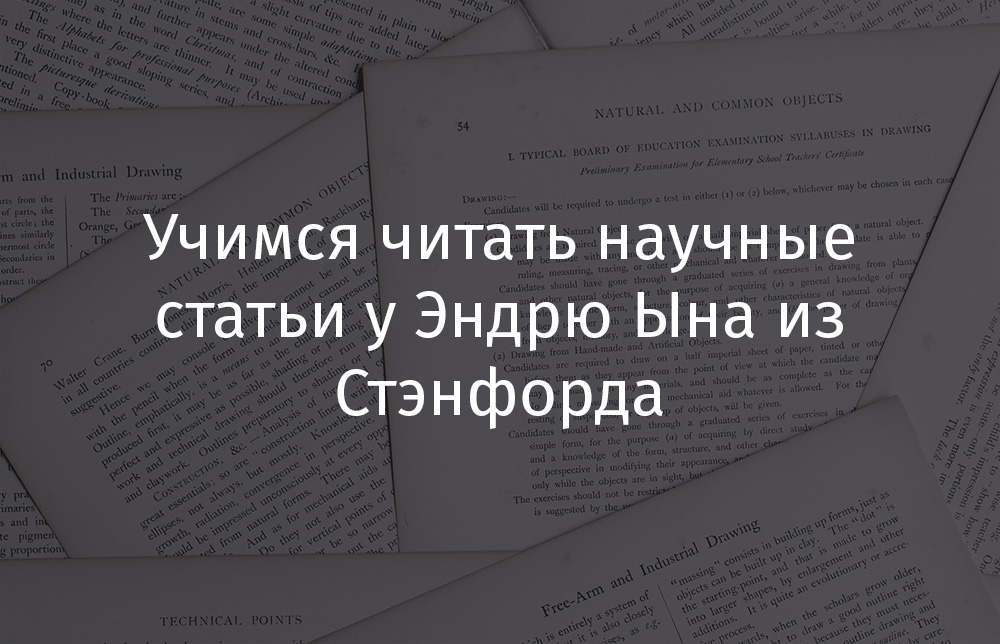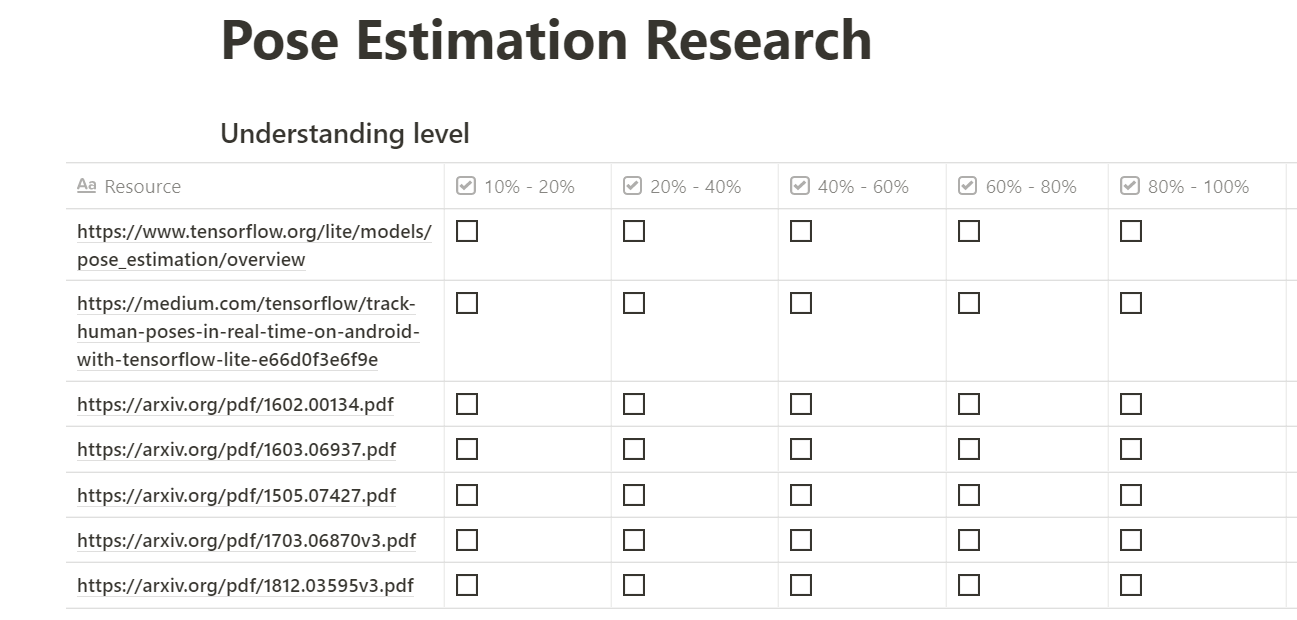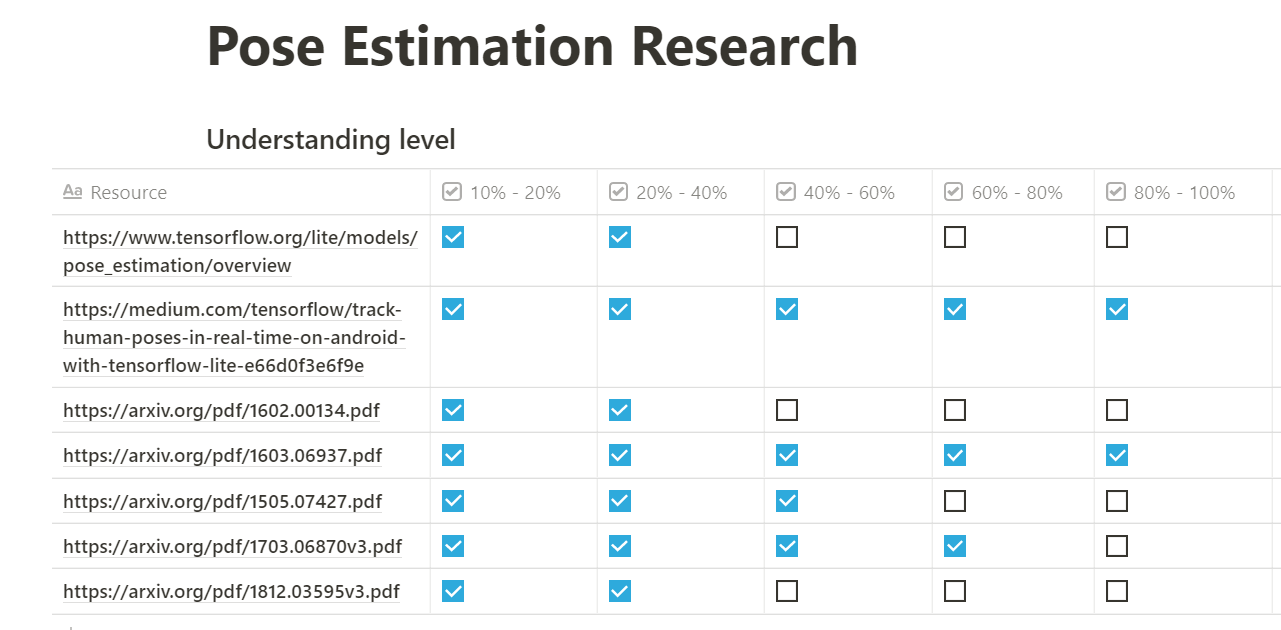Wisdom is not a product of learning, but a lifelong attempt to acquire it.
Albert EinsteinAnyone who is serious about machine learning needs to learn to understand what is published in scientific articles. Such publications are made by scientists at the forefront of research in their respective fields. These are artificial intelligence (AI, Artificial Intelligence), machine learning (ML, Machine Learning), deep learning (DL, Deep Learning) and many other areas. In order to stay up to date with the latest discoveries and expand your own knowledge, you need to have a scientific mindset and appropriate habits. AI, ML and DL technologies are evolving at an incredible rate. Therefore, in order to keep up with progress, we need to stock up on relevant knowledge. This knowledge can be obtained only in the course of working with scientific publications.

Here you will find a guide to effectively working with scientific articles. In particular, we will focus on the following topics:
- A systematic approach to reading collections of publications to gain knowledge in a field of interest to you.
- Rules for reading scientific articles.
- Useful online resources to help you find publications and critical information.
Who is Andrew Eun?
This article is based on the lectures given by Andrew Ng. I have also added here some of my own recommendations and useful information found on the Internet.
To begin with, I want to briefly tell you about who Andrew Ng is .
Andrew Ng is an assistant professor at Stanford University . He is probably the most famous (and largest audience) lecturer in machine learning. Andrew is also the co-founder of Deeplearning.ai and Coursera .
How do people acquire useful skills?
It is perfectly natural for a person to adopt the skills and habits that those around him demonstrate. It is thanks to this that doctoral students develop the skills of effective assimilation of information from scientific publications. This is, to a certain extent, a well-known fact. Andrew mentions this at the very beginning of his video lecture, which I linked to above.
But we are not students, although some of you may be a student. Therefore, we are faced with the question of how an ordinary person can acquire the skills necessary for reading and deep understanding of scientific publications.
Methodology for the selection of reading materials
For a talented person who wants to work in the field of machine learning, it is best to specialize in something. For example, it is commendable to have general knowledge of computer vision (Computer Vision). But someone who has specialized knowledge and experience in using basic methods for solving the problem of assessing the position of an object in space (Pose Estimation, PE) will look much more attractive from the point of view of a potential employer who needs a specialist in the appropriate profile.
Let us, using the example of the PE problem, analyze the methodology for working with scientific publications on the topic of interest to us.
▍1. Selection of materials
At the first step of the work, we will form a selection of resources related to the subject of our interest. Resources include academic publications, Medium articles, blog posts, videos, GitHub repositories, and so on.
If you search on Google for the phrase pose estimation, we will have at our disposal a set of links to the main resources related to the issue of interest to us. At this stage of work, our goal is to collect everything that may suit us. These are YouTube videos, documentation on the practical implementation of machine vision mechanisms of interest to us, and, of course, scientific articles. Here, ideally, you do not need to be limited to any specific amount of resources that you consider important. The main thing is to make a final list of materials that can benefit you.
▍2. Analysis of materials and assessment of the level of their understanding
Here we will analyze the resources previously recognized as potentially useful and related to the issue of interest to us. It is very important to consider that there is a method for assessing the level of understanding of the materials included in the previous step of the work in the final list. Andrew Ng recommends making a table in which you can indicate the level of understanding of each of the materials. This table may look something like the one shown below.

Resource table used to assess their level of understanding
It is recommended that you try to read at least 10-20% of the content of each document added to such a table. This will allow you to familiarize yourself with such a volume of material, which will be enough in order to accurately check how the material meets our needs.
The materials that best fit the subject of our interest need to be dealt with more deeply than others. Eventually, you will find some relevant resources that you fully understand.
Perhaps you are now wondering how many articles or other resources you should fully understand.
I have no answer to this question, but Andrew has an answer.
Namely, he says that understanding 5-20 materials indicates a basic level of orientation in the question. Perhaps this level is enough for the transition to the practical implementation of various techniques.
If we are talking about understanding 50-100 materials, this means that you are very well versed in the matter.
After you analyze the resources and learn a thing or two about them, your table will look something like the one below.

Updated table to assess the level of resource understanding
▍3. Brief description of materials
The third step of preliminary work with materials is based on my own experience. When I try to understand scientific publications, I make structured notes, in which, in my own words, I summarize the main results, findings, and methods described in the works.
Now that we have found material worth reading, we move on to reading it.
Reading a scientific article
When one reads something for the sake of understanding, reading the material alone is not enough. Andrew says that reading the entire article in one sitting may not be the best way to build understanding.
Be prepared for the fact that in order to properly master the article, you have to read it at least three times.
▍4. First reading
When you first read the article, focus on the title, annotation, and figures.
▍5. Second reading
On your second reading, pay particular attention to the introduction and conclusion. Also, take another look at the pictures and skim through the rest of the article.
The introductory and concluding sections of the article contain clear and concise information about its contents, they summarize the main findings made by the authors of the article. These sections usually do not include any supporting information. Here is only what is really important. Thanks to this, the reader is prepared for the perception of the rest of the article.
▍6. Third reading
In the third pass through the article, the main text is read, while skipping complex mathematical calculations or descriptions of techniques that are new to the reader. In addition, at this stage of work, you can skip incomprehensible or new terms.
▍7. Next article reads
Anyone who is engaged in deep research in a certain area can read the article several more times. These additional reading sessions will be mainly aimed at analyzing mathematical calculations, mastering techniques, and clarifying the meaning of unfamiliar terms.
Anyone who usually reads scientific articles for informational purposes, and in order to quickly familiarize themselves with their proposed methods of work, may find that in-depth study of the articles takes up a lot of his time. Especially when we are talking about several dozen articles that need to be worked out.
Here is an example of what I call "deep exploration" here. I read this article using the technique presented here, figured it out, and then, based on it, wrote 4 of my own articles ( 1, 2 , 3 , 4 ).
Questions to ask yourself when reading an article
Andrew gives us a list of questions to ask ourselves while reading this article. These questions are generally aimed at eliciting an understanding of what you are reading about. I use the following questions as guidelines to help me stay on track with my main goal of understanding the article.
These questions are:
- Describe what the author of the article is trying to achieve, or perhaps what he has already achieved.
- If you come across a new approach to solving a problem, with a new technique or methodology, describe their key elements.
- What exactly in the article do you find most useful for yourself?
- What materials mentioned in the article would you like to read?
Additional resources to help research
In search of information, some resources helped me a lot, the list of which I give below.
- r / MachineLearning
- r / deeplearning
- paperswithcode.com
- Sites of the leading specialized conferences: NIPS , ICML , ICLR .
- researchgate.net
You can easily make such a list yourself.
Outcome
Long-term results are obtained by constant stable study, and not by learning something "raids".
Andrew EunYa is still a relatively new person in the fields of machine learning and computer vision. And here, to put it mildly, there is still a lot that I don't know. But despite this, I am confident that if a person is consistent in his search for knowledge, no matter in what area, he will be rewarded with understanding and skills that will allow him to rise above some average level.
I plan to read at least four scientific articles a month using the methodology for working with scientific articles proposed by Andrew Ng. Read them until I understand. To be honest, it took me a week and a half to read and understand the above article on LeNet. But the more I read, the faster and better I will get it. This applies not only to me.
Andrew says he always carries around a bunch of articles that he planned to read. Andrew is a well-known personality in the field of machine learning. I think that someone who adopts his habits and methods of learning new things may be in big advantage.
How do you read scientific articles?
